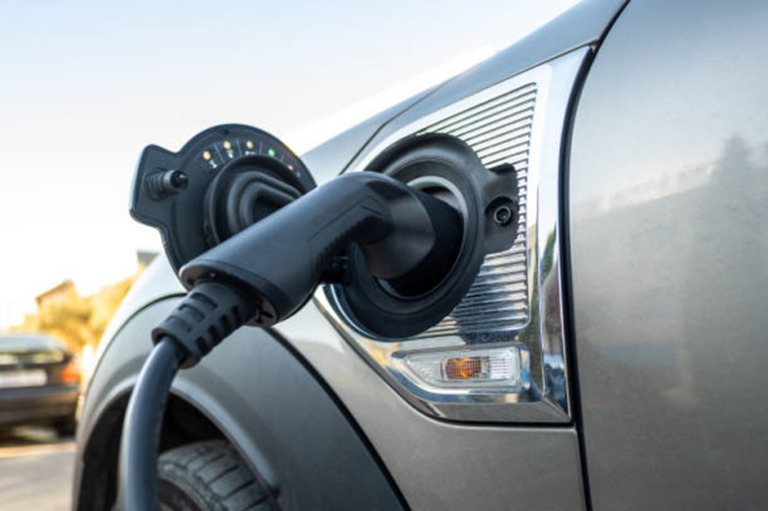Table of Contents
Introduction to Electric Vehicles (EVs)
In a world progressively determined by maintainability, electric vehicles have arisen as the signal of future transportation. They guarantee diminished emanations, productive execution, and a break from conventional petroleum derivatives. However, to genuinely embrace this future, we want a strong comprehension of EV charging.
Why Are EV Charging Stations Crucial?
Meeting Growing Demand
With a surge in consumers turning to electric vehicles, the need for convenient charging solutions has never been more pronounced. Charging stations ensure that EV users never have to fret over their next charge.
Supporting Eco-friendly Initiatives
For EVs to make a significant impact in combating climate change, a supporting infrastructure for their widespread adoption is imperative. Open charging stations are a critical component in this scenario.
Boosting EV Adoption Rates
Potential EV buyers often cite “range anxiety” as a concern. Efficient charging solutions can assuage these fears, enabling more consumers to make the transition to electric vehicles.
Different Types of EV Charging Stations
Level 1: Standard Household Charging
Utilizing standard household outlets, Level 1 chargers are the most basic. They provide a slower charging rate, typically offering around 3-5 miles of range per hour, but they are readily accessible.
Level 2: Faster Home and Public Charging
Offering 10-60 miles of range per hour, these chargers require specific installations but provide significantly faster charging times compared to Level 1.
Level 3: DC Fast Charging
Reserved for commercial or public areas, these chargers can replenish up to 80% of an EV’s battery in just 30 minutes. However, they may not be suitable for all EV models.
Home vs. Public Charging: Pros and Cons
While home charging offers the convenience of refueling your vehicle overnight, public charging stations provide the flexibility to charge on the go. However, public options could sometimes be more expensive than home power rates.
Innovative Trends in EV Charging
With the rapid evolution of the EV charging landscape, from the emergence of wireless charging pads to the development of solar-powered charging stations, the prospects of enhanced convenience and efficiency in the future appear increasingly promising.
Preparing for an EV-Powered World
To build a resilient charging network, a collaborative effort among local governments, businesses, and communities is indispensable. Leveraging incentives, integrating electric vehicle considerations into urban planning, and embracing technological advancements will be pivotal in molding the trajectory of our electric future.
Conclusion
Electric vehicle charging isn’t just about plugging in a car; it’s about powering a movement. As we shift towards a sustainable future, understanding and embracing EV charging becomes pivotal. It’s not just about fueling vehicles; it’s about fueling change.
FAQs
1. What is the importance of EV charging stations in today’s world?
EV charging stations are crucial to meet the growing demand for electric vehicles and support eco-friendly initiatives. They also play a vital role in aiding EV adoption rates by alleviating “range anxiety.
2. What are the different types of EV charging stations mentioned in the article?
The article discusses three main types of charging stations: Level 1 (standard household charging), Level 2 (faster home and public charging), and Level 3 (DC fast charging).
3. How fast does Level 1 charging typically replenish an electric vehicle’s range?
Level 1 chargers offer a slower charging rate, providing approximately 3-5 miles of range per hour.
4. What is the primary advantage of Level 3 DC Fast Charging?
Level 3 DC Fast Charging is capable of replenishing up to 80% of an EV’s battery in just 30 minutes, making it exceptionally fast compared to other charging options.
5. What are the pros and cons of home charging versus public charging?
Some additional pros and cons include the fact that home charging provides a sense of security and control over the charging process, but it might require an initial investment to install the charging infrastructure. Public charging, on the other hand, is more accessible for those without home charging options, yet it could involve waiting times at busy charging stations and might not always be compatible with all-electric vehicle models.
6. How is the EV charging landscape evolving, according to the article?
The article mentions innovative trends in EV charging, including wireless charging pads and solar-powered charging stations, ensuring more convenience and efficiency in the future.
7. What role do local states, businesses, and communities play in preparing for an EV-powered world?
These stakeholders need to collaborate to establish a robust charging network. Incentives, urban planning, and technological advancements will play a significant role in shaping the electric vehicle future.
8. What is the broader message of the article regarding electric vehicle charging?
The article, in essence, underscores the importance of a holistic approach to electric vehicle charging. It highlights the necessity for collaborative infrastructure development, emphasizing adaptability and scalability. The broader message emphasizes the imperative shift towards eco-conscious mobility and the significance of community-driven initiatives.

